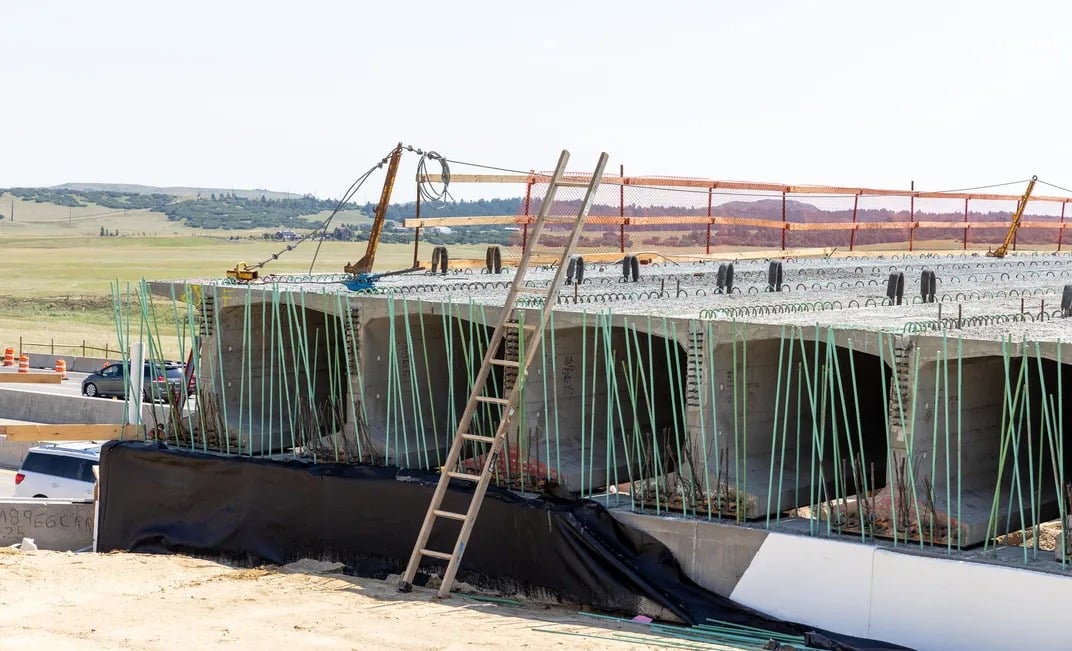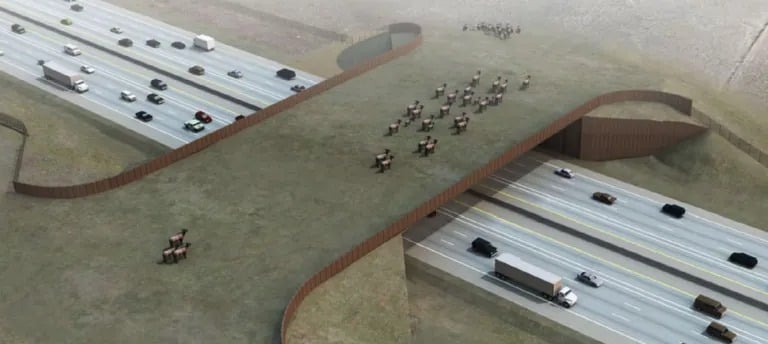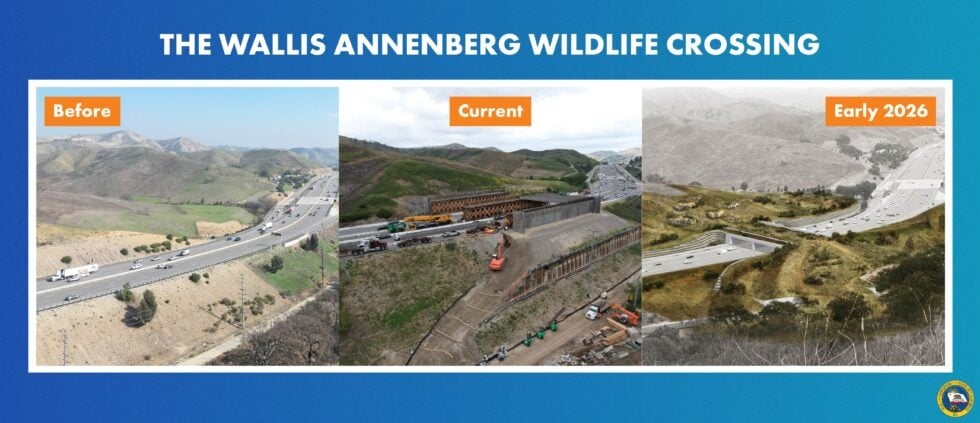World’s Largest Wildlife Bridge Aims To Protect Animals and Drivers
Language
Reading Level
Listen to Article
Alignment

Thousands of elk, deer, and other large animals move across Colorado each year. They graze in the lowlands during winter and return to the mountains in summer. But their paths often cross busy highways. This can make their migrations very dangerous. One of the most hazardous spots is Interstate 25 between the towns of Larkspur and Monument. More than 100,000 vehicles pass there every day. With six lanes cutting through thousands of acres of wildlife habitat, collisions between animals and cars are all too common.

To make the area safer, the Colorado Department of Transportation (CDOT) is building the Greenland Wildlife Overpass. Expected to be completed by December 2025, it connects 39,000 acres of protected land on one side with more than a million acres of forest on the other. Measuring 209 feet (63 m) long and 200 feet (61 m) wide, the overpass will cover 41,800 square feet (3,883 sq. m). This makes it the world’s largest wildlife bridge by area. Once ready, it will be covered with soil and native plants. This will allow the overpass to blend in with the surrounding landscape. Wildlife fencing built along the highway will help guide animals to the crossing. CDOT officials expect the overpass to reduce wildlife-vehicle accidents by up to 90 percent.
"This was a place where we were seeing a pretty high incidence of collisions," said CDOT Executive Director Shoshana Lew. "The wildlife using it are bigger, so part of the reason we need a more comprehensive structure is to make sure they'll actually use it."

The Greenland Wildlife Overpass is the latest example of Colorado’s efforts to help wildlife. The state has built more than a hundred such structures to help animals cross highways safely. Other states are also taking action. The Wallis Annenberg Wildlife Crossing in Los Angeles, California, will span 10 lanes of Highway 101. Expected to open in late 2026, it will provide mountain lions, deer, and other animals a safe path between the Santa Monica Mountains and nearby habitats. These projects show that, with some planning and effort, humans and animals can coexist safely.
Resources: Smithsonianmag.com, annenberg.org, cdot.gov